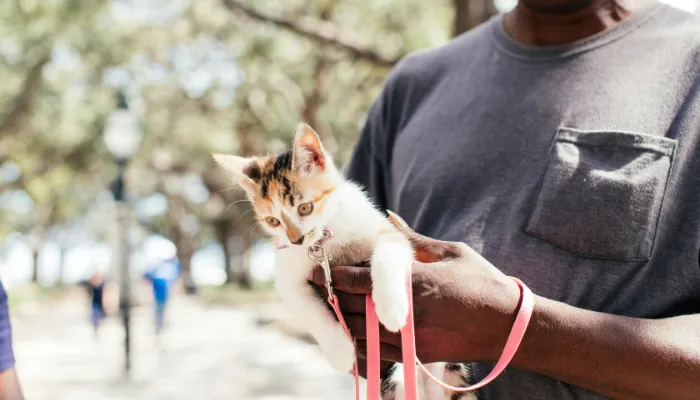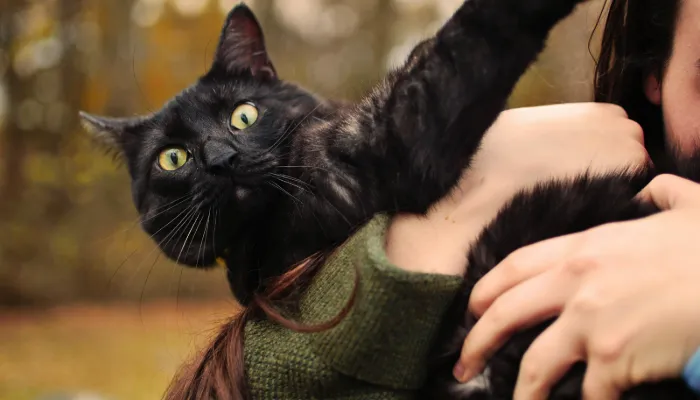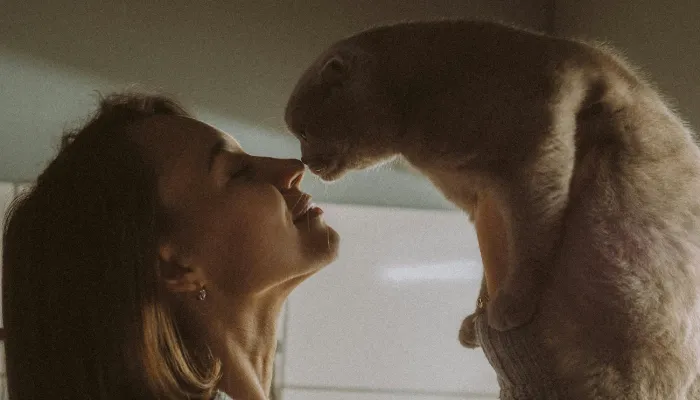How To Speak Cat Translator is an intriguing concept that a range of pet owners fantasize about mastering. Although cats and humans communicate differently, you must attempt to understand some aspects of feline behavior and vocalizations to comprehend each other better. A magic device does not exist yet and a ‘cat translator’ is simply a tool to decipher a cat’s body language, purring, meowing, and other sounds.
When you are able to interpret these cues, you gain insight into what your cat feels and what they need. In this guide, we will cover some practical methods to understand your feline buddy better for enhancing and strengthening the bond between you two.

How to Speak Cat Translator?
Asking How to speak cat translator means how do you interpret and understand a cat’s speech. Cats do not use words to communicate, but rather, they use various sounds, movements, and even their fragrance. The ability to interpret and understand these expressions is essential in meeting your cat’s needs and desires.
There are three major channels of communication that cats use with humans:
- Vocal Communication
- Body Language Communication
- Scent Marking Communication
All of these methods are significant in a cat’s interaction with the world around it. Let us take a closer look at how to wire fluently into the ‘How to speak cat translator‘ and these methods.
Vocal Communication: The Voice Of Your Cat
Cats possess a rich variety of vocal expressions. To meet their needs and express their feelings, you can use many different ones with the help of a “How to speak cat translator.” A few examples of sounds used by cats include:
Meowing:
Unlike other creatures of the feline family, ‘meowing’ serves as the principal way of communication with humans. As meowing deftly shifts its meaning, all cat guardians should learn to read between the lines.
- Short meows: Used primarily to say hello.
- Long, drawn-out meows: Usually indicate that your cat wants or expects something, like food, your attention, or even a stroll outdoors.
- Multiple meows in quick succession: These types of meows highlight an increase in excitement or urgency.
Purring:
Famously known to do this whilst being happy or relaxed, a cat’s incessant purring can pose as a warning sign. Context is important when deciphering a cat language translator for ‘meowing.’
- Soft purring: Happiness and relaxation.
- Loud or intense purring: Lethargic and tense.
Hissing:
Typically a defensive mode. Your cat may use this when feeling threatened, as it reveals fear or irritation.
- Slow hiss: Defensive or annoyed.
- Rapid hiss: means frightened or highly irritated.
Chirping or Trilling:
These noises are used by felines in order to get attention from others or express their joy. In specific circumstances, they may create these sounds to show excitement during hunting especially when a cat is spotting a bird or other prey.
Growling:
This is a sound that rarely comes out of cats but when it does, it generally indicates something quite harsh like intense pain, hostility, or terrified states. If your cat begins to growl, it’s important to assess the situation in order to understand if the cat is feeling threatened or is in danger.
A Few Tips on Interpreting the Sounds Cats Make
Curious about what your cat’s meows, purrs, and chirps really mean? This guide will help you become a “how to speak cat translator” and better understand your feline friend!
- Meow = Request: A meow usually is a request for something, most commonly an item or action, which includes food, attention, or a petting session.
- Purr = Comfort: Anytime your cat displays some form of purring, be it soft or strong, it indicates some form of happiness, though it is best to ensure that it is not distressed.
- Hiss/Growl = Warning: These sounds are offered for self-defense purposes, so when your cat makes them do not forget to respect their boundaries.
Body Language: Understanding the Feline Posture
“When it comes to unraveling the feline body language, another very important factor is the body itself. With the help of a “How to speak cat translator,” tail communication, for example, is very widely known, but there are numerous other ways that cats talk with you. Recognizing these signs helps decode their feelings and emotions.
Tail Position:
- Upright tail: Content, resting cat. As the indicator for fluffing means a confident standing position, so does the indicator of alertness.
- Tail twitching or flicking: This tail gesture may occur when your cat is anxious, petulant, restless, or, on the other hand, excited. This tail twitch may also occur when your cat is hunting or playing.
- Low tail or tucked tail: A sign displayed with the admission of submission, anxiety, and fear. Your cat may be feeling threatened or insecure.
- Fluffed-up tail: Strikingly exhibited alarm or danger. Cats fluff their tails when they are startled, frightened, or excited.
Ear Position:
- Forward-facing ears: Indicate curiosity, engagement, and alertness.
- Anger, fear or anxiety: When a cat’s ears are pinned flat, it is usually described as flat ears. In this position, a cat is more likely to be irritated or if he is being threatened.
Eye Contact:
- Slow Blink: At times, cats will slow blink to portray strong affection alongside trust toward an owner. Whenever your cat does a slow blink towards you, it proves he trusts you.
- Wide Eyes: Wide eyes may mean that a cat has been startled or is frightened.
- Dilated Eyes: When looking from a distance, a cat could have an appearance of being aroused or excited, or in some cases, frightened. Always look for other accompanying signs to accurately assess the situation.
Posture:
- Curled-up posture: A cat settled snugly in a curled-up position is a form of relaxation in a cat. A Curl Cat is also a symbol of feeling safe and secure as well.
- Arched back: A cat’s arched back could be a form of stretch or another stretching pose, however, this cat is also in a defensive position and may signify a frightened state of feeling threatened.
Quick Tips for Understanding Cat Body Language
Cats communicate a lot through their body language. Here are a few quick tips to help you decode how to speak cat translator :
- Tail Up = Happy: An excited and confident cat is usually indicated by a tail held upright, while a subdued tail means the opposite.
- Flat Ears = Distressed: Ear flat positioned easily signals a frightened or angry form.
- Wide Eyes = Concern: In some cases, wide eyes show that your feline has been startled or frightened.
- Purring + Tail Flicking = Mixed Emotions: A cat that is purring with a flicking tail is either in a state of joy or shows a tinge of irritation.
Scent Marking: Cats Communicating with Scent
While we may not recognize scent marking at first glance, it is one of the many ways for cats to express themselves. Their scent glands are located on their cheeks, the base of their tail, and on their paws. With the help of a “How to speak cat translator,” cats utilize these glands to mark their territory or to communicate with other animals.
- Rubbing Against You: When a cat rubs on you with its body, it is busy marking you with its scent to show it claims you as its territory. This reflects affectionate behavior since cats do not claim objects through domination.
- Scratching: Scratching is a way for cats to ‘dot their stamp’ on the things around them. Oftentimes, the scent of another feline can be found on these surfaces.
- Urine Marking: Urination that is often done outside the litter box can stem from behavior issues with your pet. It can also indicate stress stemming from a dominant territorial situation.
To build a better bond with your cat, enhancing communication skills is essential. They have their own language—become a “how to speak cat translator” to see real results in your relationship with them!

How to Use a Cat Translator App or Device?
If you want to enhance your experience with a more sophisticated ‘cat speak‘ approach, several “How to speak cat translator” gadgets and apps are available worldwide. It may not be accurate, but it does assist the owner in understanding the mood or needs of their cat based on its sounds or actions.
Popular Cat Translator Apps and Devices
- MeowTalk – An app meant to capture and analyze cats’ meows in an attempt to interpret them into verbal form. While the app is still being developed, it has the potential to assist cat owners in better connecting with their pets.
- Catolet – A device that monitors cat behavior and anticipates periods when the pet is likely to need the litter box. It may not actually decode meows, but it does assist in discerning behavior patterns.
- PetPace Collar – The collar enables tracking of the movement and behavioral state of the cat, including signs of tension, hunger, and illness. Even though these gadgets may not work perfectly, they are a good starting point for enhancing your understanding of your cat.
While these devices are not perfect, they can offer a helpful starting point in your journey to become a “how to speak cat translator” and understand your cat better.

Tips to Interact With Your Cats
How to speak cat translator is much more than simply interpreting their meows and deciphering their body language. Nowadays, people want to form a stronger connection with cats. Here are some suggestions:
- Share In Activities Together: Cats are social and active pets. From time to time, pet, play with, and talk to your cat to gain their trust.
- Leave Them Alone When Necessary: Every now and then, cats need alone time, so if you notice them silent, then give them some time and privacy.
- Give Them Toys: If your cat is bored, or seems sleepy, give him enthusiastic outdoor exploration (if possible), toys, or standing scratching posts.
- Routine Helps Them Feel Safe: Watched cats are routine-based animals. Give them food and toys at the same time each day, along with some consistent phrases for security.
With moments of trust and patience, you can build a better bond with your cat. Becoming a “how to speak cat translator” will deepen your relationship, bringing more joy and health to both of you.
Conclusion
As you’ve learned on this Page, understanding cats can be challenging and seemingly impossible to master. By observing their sounds, movements, and the places they mark, you can get a clearer picture of what they are feeling. While communication devices and applications like a “How to speak cat translator” do help, making progress with your cat starts with noticing them more.
The more effort you put into understanding your cat, the more you will learn how they communicate. To form multi-layered relationships with your pet, you have to get used to the idea that there is more between “meow” and tail movements. It will bring you one step closer to deepening your bond with your furry cat friend.
